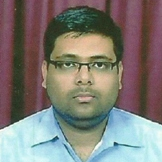International Journal of Information Technology and Computer Science (IJITCS)
IJITCS Vol. 5, No. 7, 8 Jun. 2013
Cover page and Table of Contents: PDF (size: 617KB)
Clustering Based on Node Density in Heterogeneous Under-Water Sensor Network
Full Text (PDF, 617KB), PP.49-55
Views: 0 Downloads: 0
Author(s)
Index Terms
Sensor-Network, Node Density, Cluster, Energy
Abstract
An underwater sensor network comprise of sensors and vehicles to perform numerous tasks. In underwater ad-hoc sensor network acoustic signals are transmitted through multi-hop sequence so as to save sensors’ energy and to achieve longer life time. Re-charging batteries of deep water deployed sensors is practically not feasible. Clustering is the best strategy to achieve efficient multi-hopping, where cluster head is made responsible to collect local data and forward it to the sink. Cluster-head selection is the challenging job in a cluster, as it loses its energy in transmitting its own data and aggregated data, as compared to other sensors. In this paper we have proposed an Under Water Density Based Clustered Sensor Network (UWDBCSN) scheme using heterogeneous sensors. The scheme utilizes two types of sensors: one having high energy capacity, working as cluster head, having small quantity and other are ordinary sensors in huge quantity. Further cluster-head selection is based on node degree i.e. the density of the sensors in a region. The proposed scheme is found to be more energy efficient helps in extending the life time of underwater sensor networks.
Cite This Paper
Sharad Saxena, Shailendra Mishra, Mayank Singh, "Clustering Based on Node Density in Heterogeneous Under-Water Sensor Network", International Journal of Information Technology and Computer Science(IJITCS), vol.5, no.7, pp.49-55, 2013. DOI:10.5815/ijitcs.2013.07.06
Reference
[1]J.-H. Cui, J. Kong, M. Gerla and S. Zhou, “Challenges: Building Scalable Mobile Underwater Wireless Sensor Networks for Aquatic Applications”, Special issue of IEEE Network on Wireless Sensor Networking, May 2006.
[2]M.Stojanovic, “Acoustic (Underwater) Communications”, entry in Encyclopedia of Telecommunications, John G. Proakis, Ed., John Wiley & Sons, 2003.
[3]J. Heidemann, Y. Li, A. Syed, J Wills and W. Ye, “Research Challenges and Applications for Underwater Sensor Networking”, Proceedings of the IEEE Wireless Communications and Networking Conference (WCNC2006), April 3-6, 2006, Las Vegas, Nevada, USA.
[4]J.G. Proakis, E.M. Sozer, J.A. Rice, M. Stojanovic, Shallow water acoustic networks, IEEE Communications Magazine 39 (11) (2001) 114–119.
[5]Raja Jurdak, Cristina Videira Lopes, Pierre Baldi, “Battery lifetime estimation and optimization for underwater sensor networks”, a john wiley & sons, inc., publication
[6]Kemal Akkaya* and Andrew Newell “Self-Deployment of Sensors for Maximized Coverage in Underwater Acoustic Sensor Networks”, Southern Illinois University Carbondale, IL 62901, submitted to Elsevier, January 13, 2009.
[7]Andhe Dharani, Member, IAENG, Vijayalakshmi M. N, Vijay Singh, Sumithra Devi K. A, “Power optimization in Ad hoc Sensor Networks using Clustering Approach”, Proceedings of the World Congress on Engineering 2011 Vol II, WCE 2011, July 6 - 8, 2011, London, U.K.
[8]F. Salva-Garau and M. Stojanovic, “Multi-Cluster Protocol for Ad Hoc Mobile Underwater Acoustic Networks”, In IEEE OCEANS’03 Conference, 2003.
[9]Mari Carmen Domingo,1 Rui Prior. “A DISTRIBUTED CLUSTERING SCHEME FOR UNDERWATER WIRELESS SENSOR NETWORKS”, The 18th Annual IEEE International Symposium on Personal, Indoor and Mobile Radio Communications (PIMRC'07)
[10]Park,M.K., Rodoplu, V.: UWAN-MAC: An energy-efficient MAC protocol for underwater acoustic wireless sensor networks. IEEE J. Ocean. Eng. 32(3), 710–720 (2007)
[11]Clare, L., Pottie, G., Agre, J.: Self-organizing distributed sensor networks. In: Proc. SPIE Conf. Unattended Ground Sensor Technologies and Applications, vol. 3713, pp. 229–237, Orlando, FL, Apr. 1999.
[12]Qingchao Zheng, Z. Liu, Liang Xue, Yusong Tan, Dan Chen, and Xinping Guan, “An Energy Efficient Clustering Scheme with Self-organized ID Assignment for Wireless Sensor Networks”. 2010 16th IEEE International Conference on Parallel and Distributed Systems, 2010.
[13]A. P. Chandrakasan, A. C. Smith and W. B. Heinzelman, “An Application Specific Protocol Architecture for Wireless Microsensor Networks,” IEEE Transactions on Wireless Communication, vol. 1, no. 4, 2004, pp 660-669.
[14]Kiran Vadde and Hasan Cam, 2004 A Code Assignment Algorithm for Non-blocking OVSF Codes in WCDMA, Telecommunication Systems 25:3,4, 417–431, Kluwer Academic Publisher, Netherland.
